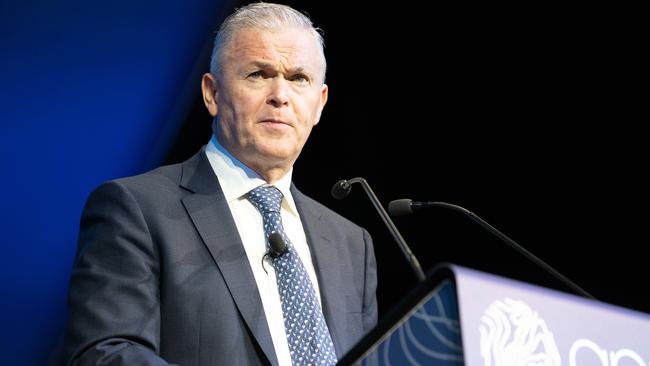Santos restructures its executive team after growth projects stalled
Santos has unveiled a corporate shake-up amid a busy schedule to deliver a raft of major projects.

Santos has restructured its executive team after creating three regional business units, a move seen as an attempt to revive notable growth projects that have stalled in recent months.
Brett Woods will run its Western Australia, Northern Territory and Timor Leste business, which would include the company’s $5.8bn Barossa gas project in the Timor Sea.
Progress on the Barossa project has slowed after a federal court last year said the oil and gas company had failed to consult local indigenous people adequately on the development.
Santos said Brett Darley would oversee the company’s eastern Australia and Papua New Guinea business unit. The new division will be responsible for the company’s $3.6bn Narrabri gas project, which Santos says would relieve an east coast gas shortage, but has faced strong opposition from farmers and environmentalists.
David Banks has been appointed to the role of executive vice-president, upstream gas and liquids division.
Former Ampol strategy chief Alan Stuart-Grant will join on August 1 as executive vice-president for Santos energy solutions, along with a role on the energy company’s executive committee.
Mr Woods was previously president of energy solutions, while Mr Darley was president of upstream gas and liquids and Mr Banks the company’s chief operating officer.
Santos said the move was triggered by its strategy reset adopted in November 2022, but analysts said they believed it marked the company’s focus on delivering key projects in Australia and Alaska.

“It is the latest organisation reshuffle in the perpetual sequence of executive and organisational changes over the last five years,” said Credit Suisse energy analyst Saul Kavonic.
“Santos is now attempting to build two multibillion-dollar projects at the same time, despite not having ever done one before, with the exception of Gladstone LNG which was hardly a success.”
Santos last year said it would move ahead with developing a $2.6bn Alaskan oil project after failing to sell down its stake – a move that received a lukewarm response from shareholders.
Industry sources said the restructure would reinvigorate its executive bench as it approaches a decision over the future of its chief executive, Kevin Gallagher.
The Adelaide-based oil and gas producer in 2021 extended the contract of Mr Gallagher for four years, a deal that included a controversial $6m “growth projects” incentive payment.
Mr Gallagher joined as chief executive in 2016 and has overseen a dramatic turnaround of a company that was then heavily weighed down by debt.
While Mr Gallagher has not indicated any desire to leave the company, he will have been with the company for nearly a decade when his contract expires, and the restructure has raised suggestions that the three executives could be auditioning for the top job.
Mr Gallagher is a prominent advocate for Australia’s fossil fuel industry that is under mounting pressure amid efforts to move to renewable energy sources. He has also been a vocal critic of the federal government’s recent intervention in the country’s gas market.
Labor last year legislated a cap on uncontracted gas at $12 a gigajoule for a year and established a mandatory code of conduct to force gas to be sold at “a reasonable price”.
The introduction of Labor’s signature emission reduction scheme, known as the safeguard mechanism, has cast a shadow over new gas developments. Under the scheme, Australia’s largest 215 emitters will be required to curtail emissions.
Santos is seen as more susceptible to the legislation as Barossa has a carbon dioxide content of about 18 per cent, much higher than low-CO2 fields such as Woodside Energy’s Scarborough project and the Beetaloo gas fields in the Northern Territory.

To join the conversation, please log in. Don't have an account? Register
Join the conversation, you are commenting as Logout